Locomotives (1/2)
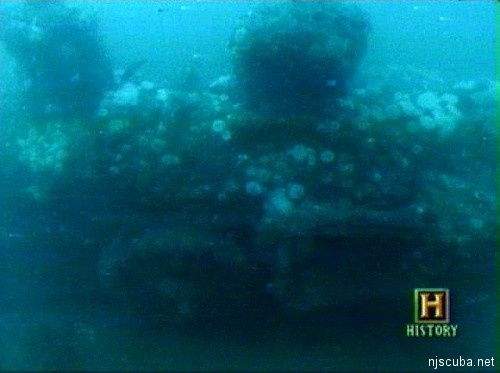
- Type:
- 2 identical small locomotives
- Sunk:
- 1850s ?
- GPS:
- 40.274769° --73.872292° (AWOIS 1991)
- Depth:
- 85 ft
Although they may have been good fodder for Deep Sea Detectives and could be of historical significance to train buffs, these two little engines are really not that great a dive. You've seen everything in ten minutes, and there is nothing else around - no evidence of a ship or barge that might have been carrying them. For a railroad fancier, these old engines might hold great interest, but I think for most divers the novelty will wear off pretty quickly. They were originally found in 1985 by Captain Paul Hepler of the Venture III, then rediscovered during a NOAA survey in 1991, and finally re-rediscovered by NJHDA in the 2000s.
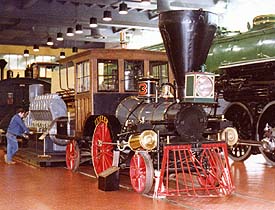
The locomotives are bigger than the 11 ton "Pioneer" shown at right, but otherwise structurally similar. The wheel layout, known as "2-2-2" ( oOo ) was very rare in the Americas, although fairly common in Great Britain.
However, the engines in question are little like the beautifully preserved Pioneer. The wood engineer's cabins have long-ago rotted away, along with most of the smokestacks and cow-catchers, leaving just the barrel of the boiler and the wheels. The engines are completely stripped of valving, instruments, lamps, and any other kind of artifact that might be of interest. Everything that remains is heavily encrusted with marine growth. Here are some images of the two locomotives, captured from the show:
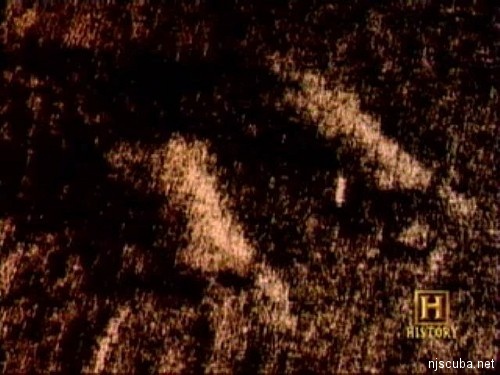
In this side-scan, it is clear that the two locomotives are slightly askew. If they were lashed to a barge that sank, you would expect them to be aligned parallel. They are, however, close together. If they had been deliberately jettisoned, you would expect that the crew would ditch one and then the other, not both at the same time, and they would land some distance apart. So the logical conclusion is that they were swept overboard by a large wave, or both broke their lashings and slid off the deck together when the vessel rolled.
It is odd that these heavy objects did not sink into the sand. Instead, they sit upon their wheels as if the sand were hard as rock, with a big space beneath each engine. MoDiver reports that the engines actually rest on iron gratings in the sand, something that the Deep Sea Detectives missed entirely. This would be the equivalent of modern warehouse pallets.
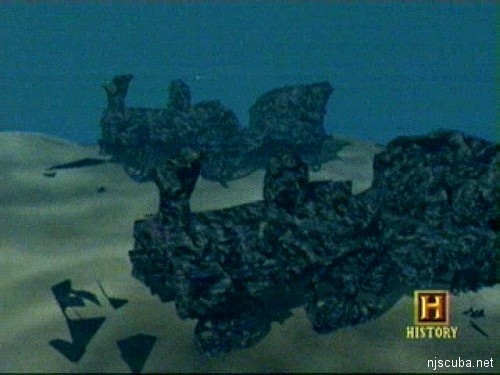
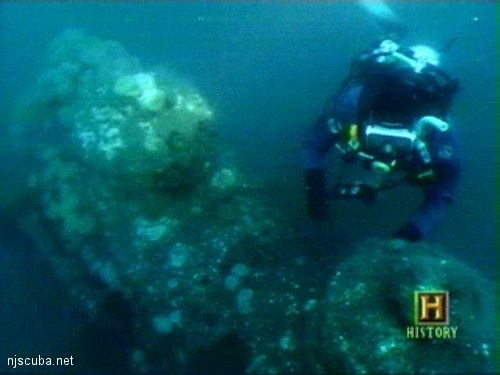
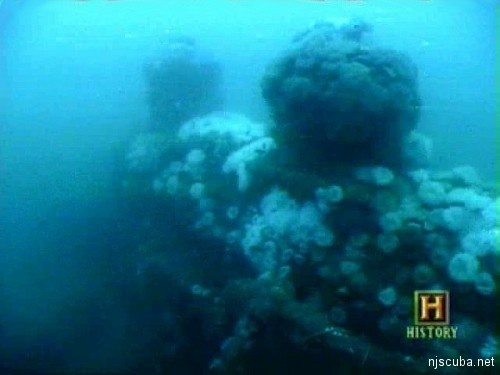
They were probably constructed in the early 1850s, possibly by the Seth Wilmarth Union Works - a South Boston builder of locomotives from 1848 till 1855.
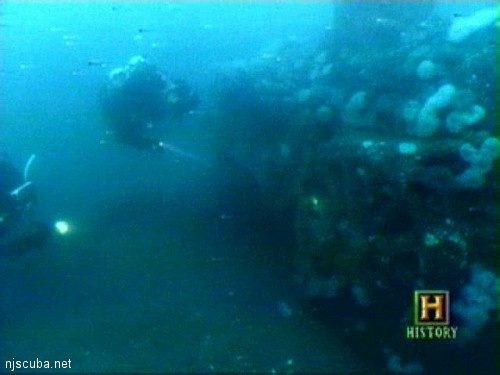
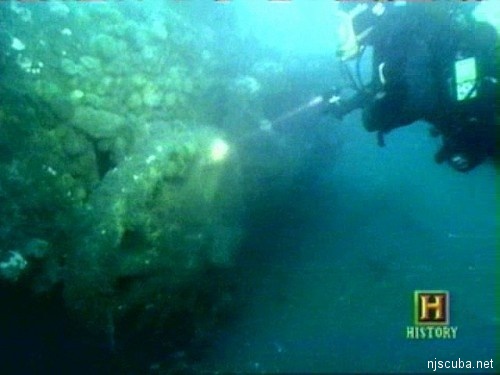
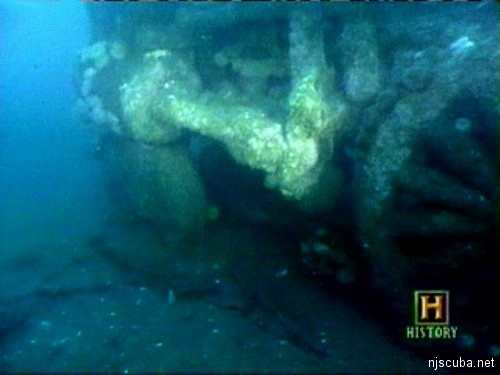
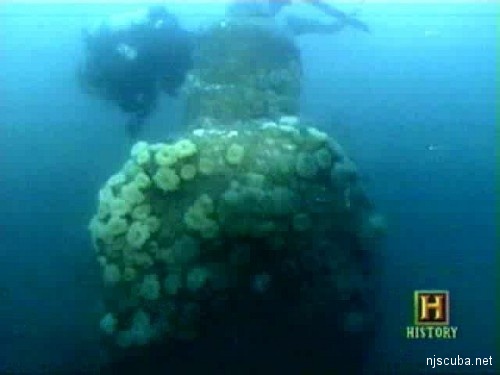
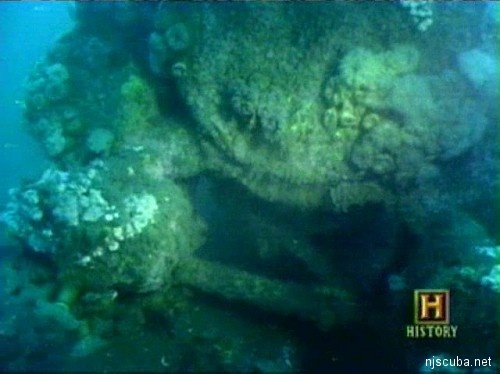
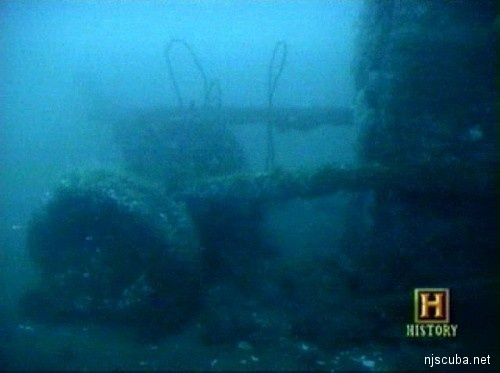
Don't get all excited about diving these things - they are hardly worth the long boat ride, and once all the hoopla from the TV show dies down, no charter boat is going to take you there. The day I dove them, along with Chatterton and the film crew from Deep Sea Detectives, there was scarce fish life and no lobsters to be found. The entire site is small and dark and cold, visibility is usually poor, and currents can be vicious ( see Macedonia. ) This is not a beginner dive. In addition, local historical organizations have "arrested" the site, legally prohibiting any tampering or removal of artifacts. During my dives there, I actually got a bigger kick out of the school of dogfish that was swarming around at about 30 feet; the subway cars were more interesting and much more accessible.
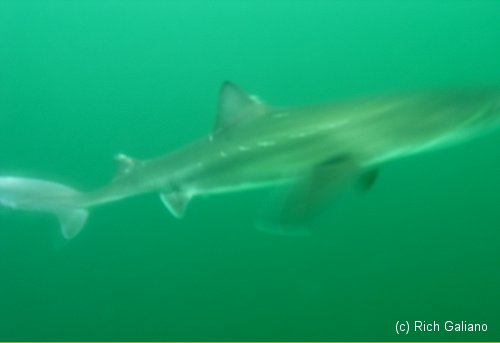
Deep Sea Detectives
UNDERWATER TRAIN WRECK
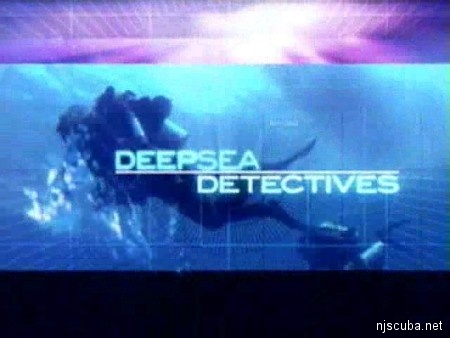
The New Jersey coast has more than its share of shipwrecks. From tramp freighters and Colonial-era sailing vessels to Nazi submarines and Cold War listening platforms, an almost limitless catalog of vessels and structures have met their end in these waters. But the strangest underwater relic of all might be two steam locomotives, upright and intact, sitting in 90 feet of water.
DEEP SEA DETECTIVES joins diver John Chatterton and his team of experts as they examine this bizarre site and try to determine what brought these massive machines to such an unlikely resting place. The mystery only deepens when we discover that these locomotives are missing links from the very first years of American railroading. With every answer raising more questions, UNDERWATER TRAIN WRECK is a fascinating piece of historical investigation.
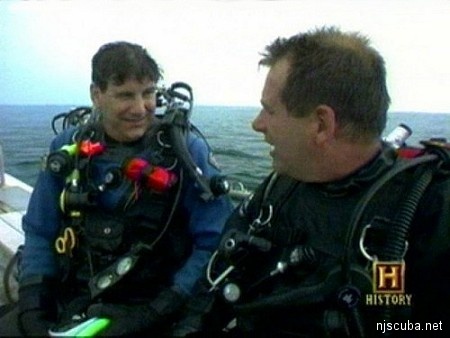
video courtesy of Dan Crowell
The NOAA Database
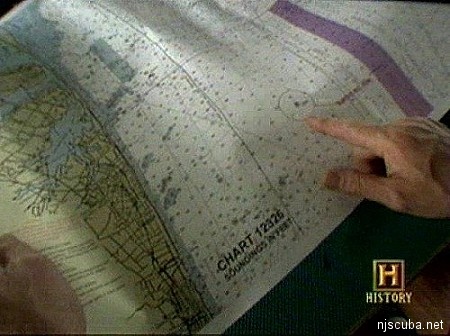
RECORD 8096 HISTORY
FE331SS/89--OPR-C147-HE-89; CONTACT #2; DIVER INVESTIGATION REVEALED TWO STEAM RAILROAD LOCOMOTIVES RESTING UPRIGHT SIDE BY SIDE ON the BOTTOM; BOTH WERE COVERED WITH MARINE VEGETATION AND CORAL; SHOALEST POINT OF the TWO LOCOMOTIVES WAS APPROXIMATELY 18 FT OFF A SANDY BOTTOM.
(NAD83); LOCAL DIVERS STATED THAT the LOCOMOTIVES WERE CARGO FROM the TRANSPORT SHIP ARUNDO, WHICH WAS TORPEDOED AND SUNK BY A GERMAN U-BOAT, U-297; EVALUATOR RECOMMENDED CHARTING A NONDANGEROUS SUBMERGED OBSTRUCTION WITH A KNOWN DEPTH OF 69 FT AS SHOWN ON PRESENT SURVEY. (ENTERED MSD 7/91)

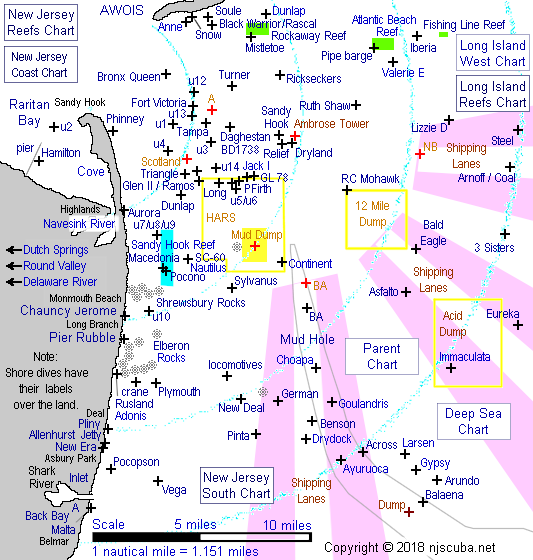
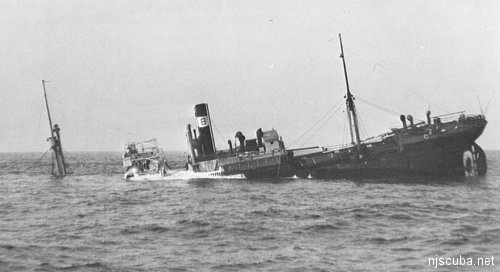
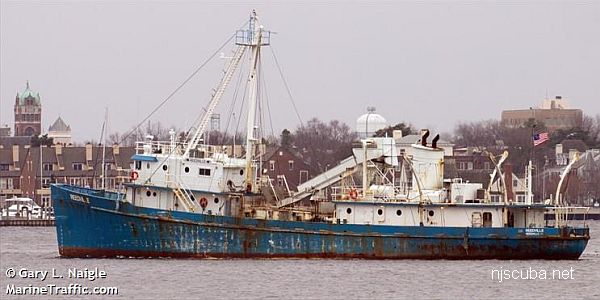
Questions or Inquiries?
Just want to say Hello? Sign the .